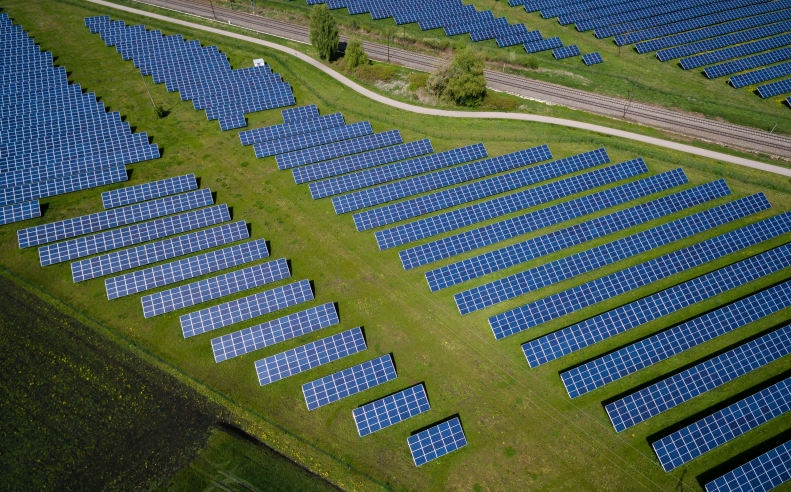Green Energy Incentives in the Inflation Reduction Act of 2022

The Inflation Reduction Act of 2022 (the “Act”), signed by President Biden this week, includes a range of new tax rules touching many different areas. The purpose of this article is to focus on the new “green” energy provisions of this legislation, which are intended to combat climate change and improve energy efficiency while at the same time incentivizing domestic manufacturing of green energy equipment and electric vehicles.
For a more general overview of other tax features of the Inflation Reduction Act of 2022, please see my colleague Stan Rose’s article.
New Electric Vehicle credits
Expanded and modified electric vehicle (EV) credits are at the core of the green energy provisions of the Act. Credits of up to $7,500 on the purchase of a new EV have been available for a number of years subject to some limitations, but the Act changes existing rules in an attempt to make the credits more widely available to middle income taxpayers while simultaneously boosting domestic manufacturing of EVs and related components.
The Act removes the prior limitation that only allowed an individual manufacturer’s first 200,000 EVs to qualify for credits. This change allows more established EV manufacturers such as Ford, GM, and Tesla to continue to qualify into the future as the industry matures. Balancing out this benefit for larger manufacturers and their customers, in order to qualify for the credit final assembly of EVs must occur in North America effective immediately. Additional rules phase in over this next several years requiring key mineral components and batteries constructed from these components to be sourced from countries the US has free trade agreements, and China is specifically excluded.
In an effort to direct EV credits to middle income taxpayers and move the EV industry away from the luxury car market and towards a broader range of US vehicle purchasers, the Act introduces a cap on the cost of qualifying vehicles equal to $55,000 for cars and $80,000 for trucks, vans, and SUVs. The Act also introduces income limitations similar to many other tax credits, meaning that eligibility for the credit is cut off for individuals earning more than $150,000 and married couples earning more than $300,000 in a given year.
Temporary transition rules published by the Treasury Department indicate that the income limitations do not apply until 2023, allowing a brief window for higher income purchasers to still claim the credit until December 31, 2022. The same transition rules also state that consumers who signed a purchase agreement before August 16, 2022 but have not yet taken delivery of their vehicles can rely on the old rules.
The maximum potential credit amount is still $7,500 for cars, light trucks, vans, and SUVs. The Act also establishes a separate credit of up to $40,000 per vehicle for the clean commercial vehicles weighing over 14,000 pounds.
The mechanics of claiming the credits remain the same as in the past for the next two years: the credits are claimed as part of a purchaser’s annual individual income tax return filing. Starting in 2024 this will change, with the credits becoming transferrable to vehicle dealers so that they can offer a discount on the price of the vehicle at the time of sale rather than requiring buyers to pay up front and then wait for a refund when they file their Form 1040 in the following year.
Used EV credit
In a further attempt to make EVs more attractive to a broader range of consumers the Act adds a new credit of up to $4,000 or 30% of the cost for purchases of used EVs costing up to $25,000 beginning January 1, 2023. Prior EV credits were only available for new vehicle purchases. This credit has a lower income limitation and is available only for taxpayers earning $75,000 for single filer or $150,000 for married couples.
Expanded credit for home energy efficiency improvements
Most homeowners likely are already familiar with the prior version of this incentive, which allowed credits (in varying percentages) for home energy efficiency improvements such as insulation, new doors and windows, and some energy efficient appliances. The impact of the former credit was severely limited, however, because it applied only to a primary residence and was subject to a lifetime limitation of $500 for each taxpayer.
The Act (1) extends the former credit using its historical characteristics and caps for another year through the end of 2022 and (2) expands the credit significantly beginning in 2023.
The new version of this credit beginning in 2023 awards an annual limitation of $1,200 with no lifetime limit for most qualifying improvements. The credit is equal to 30% of the property’s cost. Certain subcategories within the $1,200 cap contain their own annual caps, including $600 for windows, $500 for doors (and no more than $250 per door), $600 for energy equipment, and $150 for home energy audits. However, heat pumps and biomass stoves are not subject to the $1,200 cap. Instead, they have their own increased annual credit limitation of $2,000 (based on the same credit rate equal to 30% of costs).
The new credit can be claimed for improvements made to any dwelling unit used as a residence. (It no longer is limited to a primary residence.) Costs of installation and enhanced wiring are eligible for the credit, to accommodate the fact that existing systems may not be able to handle the increased load.
High-Efficiency Electric Home Rebate Program
The Act sets in motion another program for which a number of details are still unknown. This program does not exactly involve taxes or credits against them, but the High-Efficiency Electric Home Rebate Program designates $4.5 billion for the Treasury Department to develop a program with the assistance of the states, to award rebates to individuals or families who acquire, install, or retrofit certain energy-efficient improvements. To qualify, participants must earn less than 150% of their area’s median income. Rebates will be awarded by category, and can be as high as $8,000 for a heat pump and $1,600 for wiring, for instance. Each family’s cap cannot exceed $14,000 in total, and the percentage of the property’s cost awarded as a credit will vary based on income. This program will run through 2031, and specifics regarding its logistics and implementation are still in development.
Residential Clean Energy Credit
Another credit already familiar to many home owners, the Residential Clean Energy Credit originally allowed a 30% credit most commonly claimed in connection with solar panels installed on the roof of a home or an individual’s investment in a community solar farm. The credit was reduced from 30% to 26% in recent years and was scheduled for further reductions and expiration. The Act brings this credit back at 30% and extends it for another 10 years through December 31, 2032.
Clean energy credits for businesses and investors
Similar to the residential credit, the corresponding business investment tax credit for solar and certain other renewable energy technologies was reduced from 30% to 26% in recent years and was scheduled for further reductions and expiration. The Act brings this credit back at 30% for projects completed in 2022, 2023, and 2024, and expands the credit to include energy storage technologies.
For projects in 2025 and beyond the current 30% investment tax credit is replaced by a new two-tier production and investment tax credit that continues to incentivize clean energy investments with up to a 30% credit while also requiring that projects meet prevailing wage and apprenticeship standards and source materials from within the US. The details of this new credit regime are beyond the scope of this article and will be discussed in a future publication.
Closing
This discussion is intend as an overview of only the most salient clean energy features of the Inflation Reduction Act of 2022. This legislation touches on many other topics including incentives for carbon sequestration, nuclear power, alternative fuels, and much more.
For more information, please contact Dan Gayer or your BNN tax advisor at 800.244.7444.
Disclaimer of Liability: This publication is intended to provide general information to our clients and friends. It does not constitute accounting, tax, investment, or legal advice; nor is it intended to convey a thorough treatment of the subject matter.
